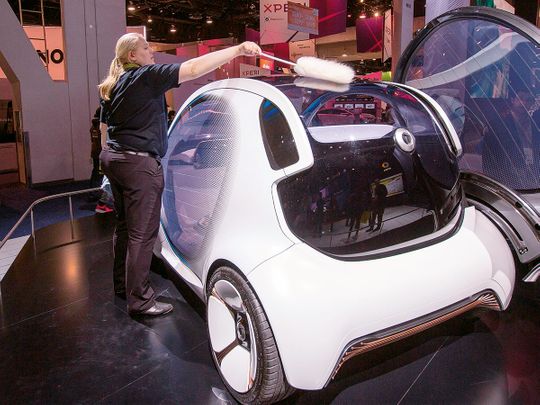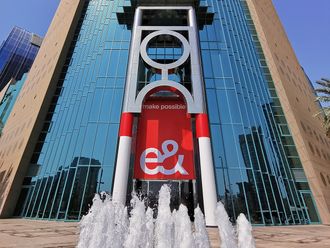
Las Vegas: Four years ago, Daimler AG dazzled with a self-driving luxury lounge in Las Vegas with a concept vehicle boasting a sleek interior that promised to pamper its well-heeled passengers into the automotive future.
This year the Mercedes-Benz maker is back at the annual Consumer Electronics Show, though with a more utilitarian slant: a bubble-like autonomous shuttle designed to reliably ferry people and goods around town at limited speeds.
The move from glittery luxury concepts to box-shaped people movers underscores a shift in the race toward autonomous vehicles. While driverless cars might not populate public roads for some time, shuttle services in confined areas have started to look more feasible, at least over the next few years.
“These vehicles have moderate technical complexity and drive at low speeds, which makes them easier to produce than conventional cars,” Wolfgang Bernhart, partner at consultancy Roland Berger GmbH, said in a phone interview. “The potential for special-purpose vehicles and autonomous driving as a whole is significant.”
Sales of autonomous shuttles will reach about 1 million vehicles in 2020 and could more than double to 2.5 million by 2025, the consultancy estimates. While only a fraction of global car deliveries, it beats last year’s sales at Mercedes, the world’s bestselling luxury-car maker.
Here’s a rundown of some of the main concepts being shown at CES this year and elsewhere:
- Daimler’s Vision Urbanetic
- Bosch’s driverless shuttle
- Volkswagen’s Sedric
- May Mobility
Other contenders include Continental AG’s Cube autonomous shuttle, while ZF Friedrichshafen, another large German auto parts supplier, has teamed up with startup e.Go Mobile AG to start making driverless vehicles from late 2019.
Technical hurdles remain substantial for self-drives facing situations on public roads that are often difficult to predict. Bosch and Daimler have started a joint test using an automated ride-sharing service using Mercedes S-Class sedans in San Jose, California.
“We remain realistic that robo business models will still take a material amount of time and significant tech improvements in order to be deployed at scale and with a profit,” Arndt Ellinghorst, a London-based analyst at Evercore ISI, said in a note to clients. But “it is now well understood that the risk of sitting on the fence is too large,” he said.












